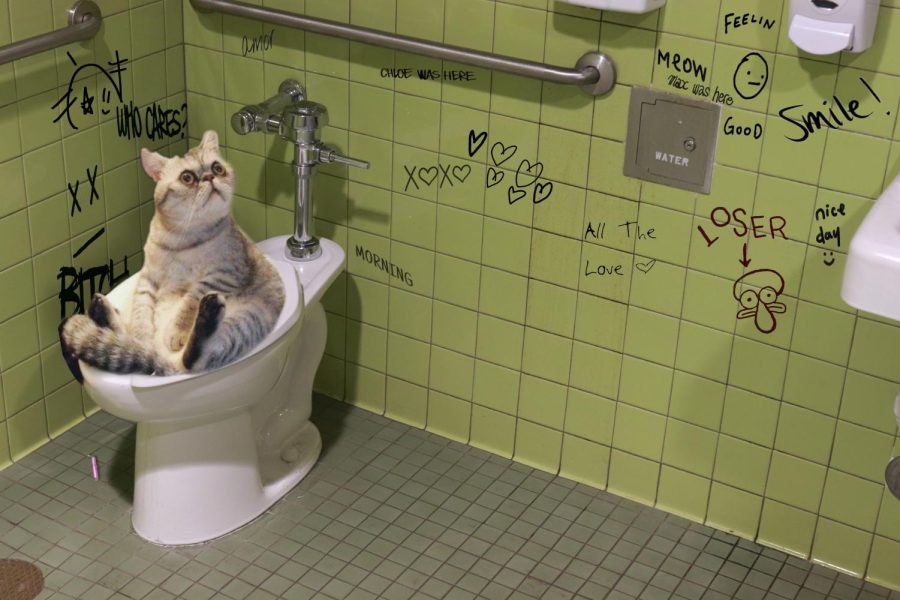Discovering the Dangers of Flushing Animal Waste Down the Toilet
Discovering the Dangers of Flushing Animal Waste Down the Toilet
Blog Article
What're your insights and beliefs about 4 Reasons Why Dog Poop Cleanup is Important?

When it involves disposing of waste, especially animal waste, many individuals frequently turn to the practical choice of flushing it down the commode. Nonetheless, this apparently very easy option can have serious consequences for the setting and public health. In this article, we'll check out why flushing pet waste down the commode is a bad concept and provide alternate techniques for appropriate disposal.
Intro
Appropriate waste disposal is essential for preserving environmental sustainability and public health. While it may appear harmless to purge animal waste down the toilet, it can bring about different concerns, both for the setting and human well-being.
Dangers of flushing pet waste
Ecological influence
Purging pet waste introduces damaging microorganisms and microorganisms into rivers, which can adversely impact marine ecological communities. These microorganisms can infect water resources and harm marine life, interfering with fragile ecosystems.
Public health concerns
Animal waste has harmful germs such as E. coli and Salmonella, which can position serious health risks to human beings. Flushing pet waste down the toilet can pollute water supplies, resulting in the spread of illness and infections.
Alternatives to flushing
Instead of flushing pet waste down the bathroom, there are a number of different disposal methods that are extra eco-friendly and sanitary.
Composting
Composting pet waste is an environment-friendly means to get rid of it. By composting, organic matter is broken down into nutrient-rich soil, which can be used to fertilize gardens and plants.
Landfill disposal
Throwing away animal waste in a landfill is another option. While not as environmentally friendly as composting, it is a more secure alternative to flushing, as it stops the contamination of water sources.
Family pet waste disposal systems
There are customized pet waste disposal systems available that safely and hygienically throw away animal waste. These systems typically make use of enzymes to break down waste and remove smells.
Steps to appropriate animal garbage disposal
To guarantee correct disposal of animal waste, follow these steps:
Scooping and nabbing waste
Consistently scoop and bag pet waste making use of naturally degradable bags. This avoids waste from contaminating the setting.
Utilizing marked waste bins
Dispose of bagged animal waste in marked waste containers, such as garden compost bins or land fill containers. Prevent flushing it down the bathroom whatsoever costs.
Cleaning litter boxes and pet locations frequently
On a regular basis tidy litter boxes and pet areas to avoid the build-up of waste and microorganisms. Use pet-safe cleaning items to maintain hygiene.
Advantages of proper disposal approaches
Embracing proper disposal techniques for pet waste offers numerous advantages:
Reduced environmental pollution
Appropriate disposal methods reduce the danger of read more environmental pollution, shielding waterways and environments from contamination
Minimized risk of water contamination.
By preventing flushing animal waste down the commode, the threat of water contamination is considerably decreased, guarding public health.
Enhanced sanitation and hygiene
Proper disposal methods promote better cleanliness and health, developing a safer setting for both human beings and animals.
Verdict
Finally, purging animal waste down the commode is unsafe to the atmosphere and public health. By taking on alternate disposal methods and following appropriate waste monitoring methods, we can reduce the adverse effect of pet waste and contribute to a cleaner, healthier earth.
What To Do With Dog Poo – The Do's And Don'ts Of Disposing Of Faeces
Dog poo bins
Some councils provide dedicated dog waste bins in popular dog-walking areas that can take dog poo that has been bagged but you can legally dispose of dog waste in any public litter bin, as long as it is securely bagged. This also applies to your wheelie bin at home.
Do not flush
Water companies do not recommend flushing dog faeces down the toilet because certain parasites can survive the water processing treatment and are potentially harmful to humans. You should also never consider flushing dog poo that has been bagged down the toilet as the bags will not break down and instead create severe blockages in the sewage system.
In the woods
The Forestry Commission promotes a ‘stick and flick’ method for dealing with waste in the woods. This means finding a stick and using it to flick any poo from off the path so that it is out of the way of other walkers. You could also bury it as long as it is not in an area where there might be livestock.
Livestock
Parasites found in dog poo can be transmitted to livestock if they inadvertently eat infected faeces that has been left on grazing land. This could result in the death of sheep or abortion in cattle so you should always make sure you pick up your dog’s waste in fields where livestock could be present.

We were shown that editorial on Why you should never flush dog poop down the toilet from a pal on our other web property. Are you aware of anybody else who is very much interested in the topic? Please feel free to promote it. I am grateful for being here. Return soon.
Click Here! Report this page